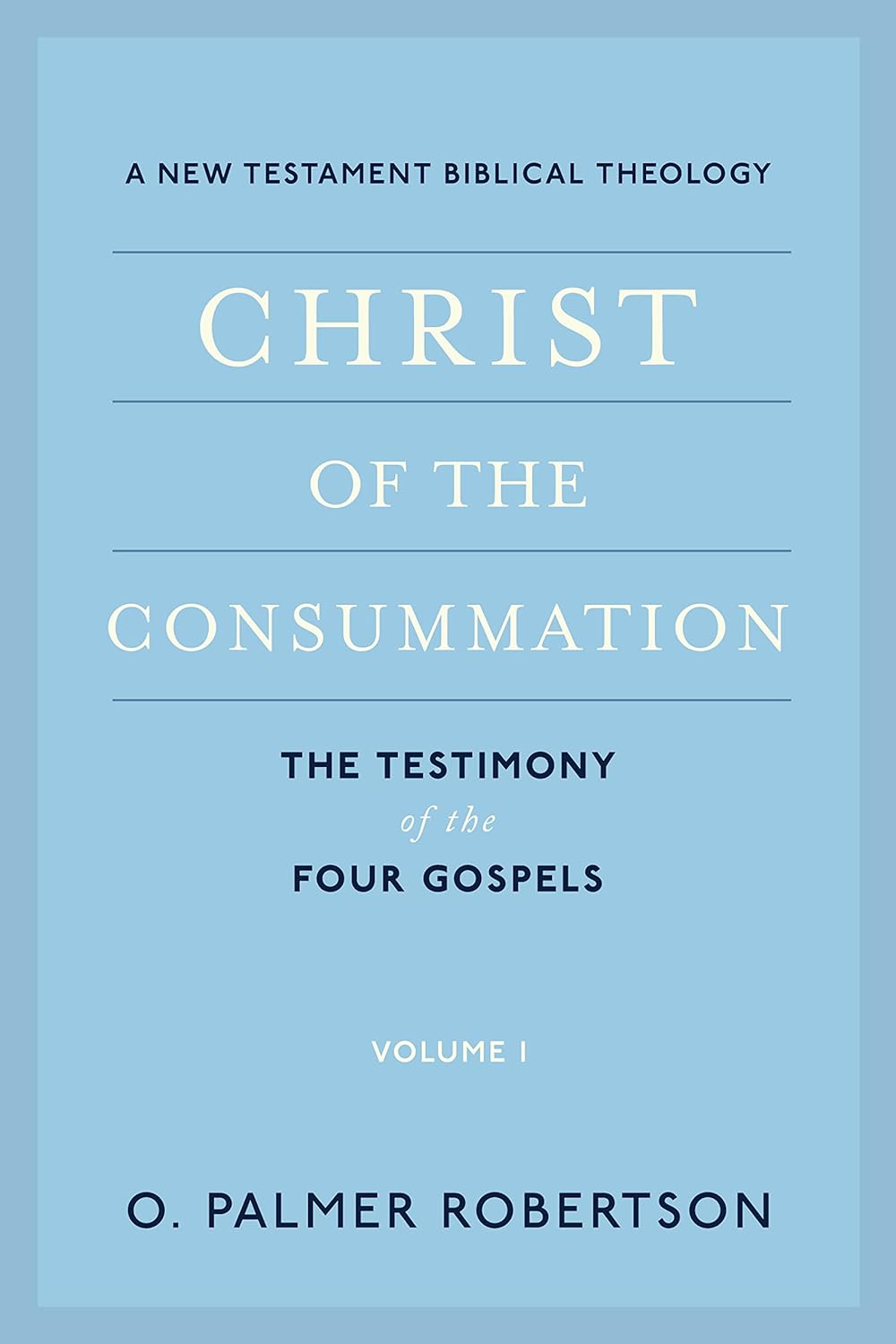A Book Review from Books At a Glance
by Thomas Haviland-Pabst
O. Palmer Robertson is head of Consummation Ministries and formerly served in various professorial posts. A prolific author, he is perhaps best known for his Christ of the Covenants. This first volume of the author’s work on a biblical theology of the New Testament focuses, as the subtitle suggests, on the four gospels. The book is divided into eight chapters.
In the preface, Roberston makes it clear to the reader that he is self-consciously building on the work of Geerhardus Vos, who is considered by many to be the father of Reformed biblical theology. Given the complexity of biblical theology as a discipline, never mind the various recent works in this field that have been published, two questions come to mind: how is Robertson going to approach the task of biblical theology, and how unique contributions does this work offer to the field? Robertson helpfully answers both of these in the introduction.
After briefly discussing two approaches to biblical theology, namely, topical (e.g., sin in the Pauline letters) and, what he calls, “the Bible-book approach” (p. 7), i.e., treating each book of the New Testament as it appears canonically, Robertson states that he will adopt a third option: the redemptive-historical method. He defines this approach as “the effort … to reconstruct the progress of redemptive history and revelation through the various periods of the New Testament era” (p. 8). Thus, his redemptive-historical approach together with his focus on the significance of the OT Scriptures for understanding the NT and his eye toward the goals that motivate the various NT writers are three distinctive features of his work.
Chapters 2-6 provide a biblical-theological overview of the gospels, starting with the arrival of John the Baptist and ending the culmination of Jesus’s earthly ministry with his death, burial, resurrection, and ascension. Here, Robertson explores such topics as Jesus’s self-attestation, the nature of the kingdom of God, and the significance of Christ’s resurrection. In the seventh chapter, consisting of roughly half of the book, he explores the distinctive voice of each of the gospels which is in line with his concern to discern the aim of the NT writers.
A few highlights should suffice to give the reader a sense of Robertsons’s offering with this book. In his discussion of the title ‘Son of Man,’ while noting the common occasion drawn between this phrase and Daniel 7, Robertson makes the case that Ps 80 fills out our understanding of Jesus’s use of this title. He writes, “the fully human but also exalted ‘Son of Man’ of Psalm 80” (p. 48) comes to the foreground with this OT connection.
Exploring the phrase ‘kingdom of heaven’ in Matthew, Robertson resists the tendency of some scholars to equate this phrase with ‘kingdom of God.’ Rather, he argues, in light of Daniel 2:28 (“There is a God in heaven who reveals mysteries”), that there is an additional shade of meaning that come with Matthew’s use of this phrase, namely, “[j]ust as the heavens span this earth from north to south, from east to west, so the rule of heaven’s kingdom overarches all earthly kingdoms and powers” (p. 30). The author later ponders the significance of Christ’s death, arguing that “Jesus presents himself as the embodiment of the ‘ransom’ principle … a substitutionary sacrificial offering ‘in place of’ ‘many’ (p. 133). Here, we see biblical theology dovetail with systematic concerns since, for Robertson, Jesus’s ransom for many strongly indicates the truth of particular redemption.
In addition, Robertson pushes against an atomistic approach to the NT use of the OT which stresses explicit uses of the OT by NT writers. Taking a maximalist approach along the lines of such contemporary scholars as G. K. Beale, he writes that rather than take a minimalist approach to this area of study, “it’s coming to understand how the Old Testament in its total message shapes the very heart and substance of the New Testament” (p. 15) that gets at what the NT writers are doing with the OT. One last intriguing note must be mentioned. Robertson appears to favor the inclusion of the longer ending of Mark (Mk 16:9ff) as authentic, drawing from recent monograph by Nicholas Lunn.
When one compares this book with others in the field (Beale, Stuhlmacher), it has the feel more of a survey of the gospels than a full-throated, advanced NT biblical theology. This is especially evident in the lack of lengthy prolegomena and the general avoidance of technical discussion and vocabulary. We hasten to add that this does not detract from the many insights that attend this work. Moreover, Robertson’s command of Scripture as a whole, his fluency with the gospel texts, and his warm, pastoral tone will make this book valuable to an undergraduate student, interested layperson, or busy pastor who needs in-depth exploration of the gospels. In addition, Robertson’s maximalist approach to the NT use of the OT and attention he brings to the voice of each of the gospel writers contribute to our understanding of the NT use of the OT and the diversity in unity of the fourfold gospel witness. We look forward to reading more of Robertsons’s insights in the next installation of this series. Highly recommended.
Thomas Haviland-Pabst
